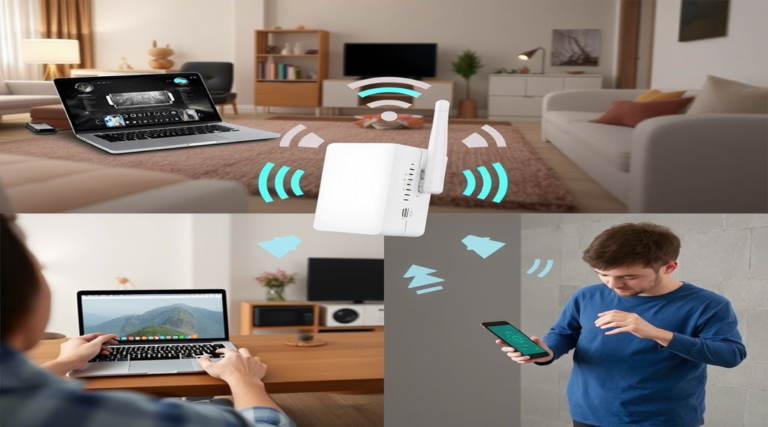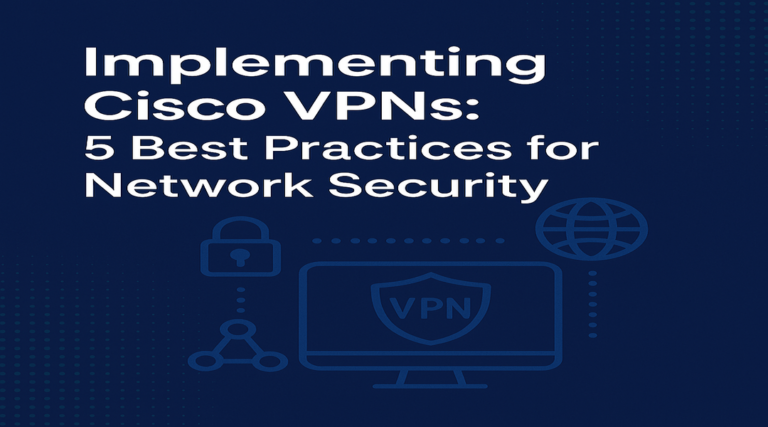Network Security: 9 Myths That Put Your Data at Risk
In today’s hyperconnected digital landscape, network security isn’t just an IT concern—it’s a business survival imperative. With cyber attacks occurring every 39 seconds on average and the global cost of cybercrime projected to reach $10.5 trillion annually by 2025, the stakes have never been higher. Yet despite these alarming statistics, many organizations continue to operate under dangerous misconceptions about their network security posture.
The 2023 Verizon Data Breach Investigations Report revealed that 74% of breaches involved the human element, while 95% were financially motivated. Behind these numbers lie businesses that believed their networks were adequately protected—until they weren’t. From small businesses that thought they were “too small to target” to enterprises that invested millions in technology while neglecting basic security hygiene, these misconceptions lead to devastating consequences.
The good news? Understanding and addressing these network security myths can significantly strengthen your defenses without necessarily breaking the bank. By separating fact from fiction, you can make informed decisions about protecting your valuable digital assets, maintaining customer trust, and ensuring business continuity in an increasingly hostile cyber environment.
Table of Contents
What is Network Security?
Network security encompasses the policies, practices, and technologies designed to protect the integrity, confidentiality, and accessibility of computer networks and data. Think of network security as the immune system for your digital infrastructure—constantly working to identify, prevent, and respond to threats before they can cause harm.
At its core, network security creates multiple layers of defense throughout your network architecture, from edge to endpoint. This includes everything from firewalls and intrusion detection systems to authentication protocols and encryption. Effective network security doesn’t just block malicious attacks; it also ensures authorized users can access resources while maintaining visibility and control over network traffic.
Whether you’re a small business owner or an IT professional, understanding network security fundamentals is crucial for protecting sensitive information and maintaining operational resilience in today’s threat landscape.
Why You Need Network Security
Protection Against Cyber Threats
The digital threat landscape has never been more dangerous or diverse. Malware infections can encrypt your critical data and demand ransom payments. Sophisticated phishing campaigns target your employees with increasingly convincing tactics. DDoS attacks can bring your online operations to a grinding halt, costing thousands in lost revenue per minute of downtime.
The Colonial Pipeline attack of 2021 demonstrates the devastating real-world impact of inadequate security. A single compromised password led to a ransomware attack that shut down fuel delivery to the eastern United States, causing widespread panic buying and fuel shortages across multiple states. With proper network security controls, this catastrophe might have been prevented.
Financial and Data Security Benefits
The financial case for robust network security is compelling. IBM’s Cost of a Data Breach Report shows that the average data breach costs organizations $4.45 million—a figure that doesn’t include reputational damage and lost customer trust. Network security investments are insurance against these potential losses.
Beyond financial protection, network security safeguards your most valuable asset: data. Customer information, intellectual property, and operational data require proper protection not just for business continuity but also for maintaining competitive advantage. When properly implemented, network security measures create a secure environment for innovation and growth while protecting sensitive information from unauthorized access.
Compliance with Security Regulations
Regulatory requirements like GDPR, HIPAA, PCI DSS, and CCPA mandate specific network security controls for organizations handling sensitive data. Non-compliance penalties can be severe—up to 4% of global annual revenue under GDPR, for instance.
More importantly, these regulations establish baseline security standards that protect consumers and businesses alike. Implementing strong network security helps meet these requirements while demonstrating your commitment to protecting stakeholder information. This compliance stance can become a market differentiator in industries where data protection is paramount to customer trust.
How to Implement Network Security
Quick Overview
Effective network security requires a multi-layered approach combining technical controls, administrative policies, and security awareness. Core elements include properly configured firewalls to filter traffic, strong encryption to protect data in transit and at rest, and robust authentication systems to verify user identities.
Regular security updates address known vulnerabilities, while continuous monitoring detects suspicious activities that bypass preventive controls. Equally important is cultivating security awareness among employees, who remain both your greatest vulnerability and your first line of defense against social engineering attacks.
Key Components of Network Security
- Firewalls: These critical barriers filter incoming and outgoing network traffic based on predetermined security rules. Next-generation firewalls go beyond simple packet filtering to provide application-level inspection, threat intelligence integration, and advanced malware detection capabilities.
- Intrusion Detection and Prevention Systems (IDPS): These systems monitor network traffic for suspicious activities and known attack patterns, alerting security teams to potential breaches and often automatically blocking threatening traffic before damage occurs.
- Virtual Private Networks (VPNs): VPNs create encrypted tunnels for secure remote access to network resources, ensuring that sensitive data remains protected when transmitted over public networks like the internet.
- Endpoint Security Solutions: These tools protect individual devices that connect to your network, including antivirus, anti-malware, host-based firewalls, and endpoint detection and response (EDR) capabilities that identify and contain threats at the device level.
- Multi-Factor Authentication (MFA): MFA significantly strengthens access security by requiring multiple verification methods beyond passwords, making unauthorized access substantially more difficult even if credentials are compromised.
- Data Encryption: Encryption transforms readable data into encoded text that can only be deciphered with the correct encryption keys, protecting sensitive information both in transit across networks and stored on systems.
- Security Information and Event Management (SIEM): SIEM solutions aggregate and analyze security data from multiple sources across your network, providing holistic visibility into security events and helping identify patterns that might indicate compromises.
Step-by-Step Guide to Strengthening Network Security
- Conduct a thorough security assessment:
- Identify all assets connected to your network
- Document current security controls and policies
- Perform vulnerability scanning and penetration testing
- Evaluate results against security frameworks like NIST or CIS
- Secure network perimeter:
- Deploy and properly configure firewalls at network boundaries
- Implement intrusion detection/prevention systems
- Establish DMZ (demilitarized zones) for public-facing services
- Enable filtering of malicious content and URLs
- Implement access controls:
- Apply principle of least privilege for all accounts
- Deploy multi-factor authentication for all remote access
- Create role-based access policies
- Regularly audit user permissions and remove unused accounts
- Protect data through encryption:
- Encrypt sensitive data both in transit and at rest
- Implement TLS for all web applications
- Deploy VPNs for secure remote connections
- Establish key management processes
- Develop a patch management strategy:
- Create an inventory of all software requiring updates
- Establish regular patching schedules
- Test patches before deployment
- Prioritize critical security updates
- Educate and train employees:
- Conduct regular security awareness training
- Simulate phishing attacks to test awareness
- Develop clear security policies and procedures
- Create incident reporting mechanisms
What to Combine Network Security With
Cloud Security Solutions
As organizations migrate more infrastructure to the cloud, integrating cloud security solutions with traditional network security becomes essential. Cloud access security brokers (CASBs) provide visibility and control over cloud applications, while cloud workload protection platforms secure virtual machines and containers. This integration ensures consistent security posture across hybrid environments.
Zero Trust Architecture
The traditional network perimeter has dissolved. Zero Trust replaces “trust but verify” with “never trust, always verify,” requiring continuous authentication and strict access controls regardless of location. By combining Zero Trust principles with network security tools, organizations create defense-in-depth that addresses modern work patterns without sacrificing protection.
AI-Powered Threat Detection Systems
Artificial intelligence and machine learning significantly enhance network security by analyzing vast amounts of data to identify anomalous patterns that might indicate attacks. These systems improve detection rates while reducing false positives, allowing security teams to focus on genuine threats rather than noise. When combined with traditional network security controls, AI creates a more responsive and adaptive security posture.
Cyber Hygiene Training for Employees
Technical controls alone cannot secure networks when users inadvertently introduce risks. Regular security awareness training transforms employees from security liabilities into security assets. Phishing simulations, security newsletters, and clear policies around device usage and data handling complement technical controls by addressing the human factor in network security.
Top Tips for Strengthening Network Security
Password and Authentication Best Practices
- Implement password managers to generate and store complex credentials
- Require minimum 12-character passwords with complexity requirements
- Deploy multi-factor authentication across all critical systems
- Use single sign-on where appropriate to reduce password fatigue
- Consider passwordless authentication methods for higher security
Firewall and VPN Configuration
- Segment networks using VLANs and internal firewalls
- Default to denying all traffic, then allow only necessary services
- Implement deep packet inspection for encrypted traffic
- Configure split tunneling carefully to prevent VPN bypasses
- Regularly audit firewall rules and remove unnecessary permissions
Penetration Testing Essentials
- Conduct external and internal penetration tests at least annually
- Use both automated tools and manual testing techniques
- Test recovery procedures, not just prevention capabilities
- Address critical findings immediately with remediation plans
- Consider red team exercises for more mature security programs
Common Security Mistakes to Avoid
- Neglecting IoT device security on corporate networks
- Failing to properly secure development environments
- Overlooking printer and peripheral security
- Using outdated or unpatched legacy systems
- Implementing security tools without proper configuration
Storing and Managing Security Logs
Comprehensive logging provides the foundation for effective incident detection and response. Organizations should capture logs from all critical systems, network devices, and security tools, storing them in a centralized repository for correlation and analysis. The standard recommendation is to retain logs for at least one year, with critical security events maintained longer to support forensic investigations.
For optimal security monitoring, implement automated log analysis tools that establish baselines of normal activity and alert on deviations. Regular log reviews help identify subtle attack patterns that might otherwise go unnoticed. Consider implementing security orchestration, automation, and response (SOAR) platforms to streamline the investigation process and accelerate response to security incidents identified through logs.
When implementing logging solutions, ensure they’re configured securely with strong access controls and encryption to prevent tampering. Remember that logs themselves can contain sensitive information and should be protected accordingly.
9 Network Security Myths That Put Your Data at Risk
Myth 1: “We’re too small to be targeted.”
Small businesses often believe their size makes them unattractive to attackers. The reality? Over 43% of cyber attacks target small businesses precisely because they typically have weaker security controls. Hackers view small organizations as easy entry points into larger supply chains or valuable data sources with minimal protection.
Myth 2: “Our antivirus software provides complete protection.”
While antivirus software remains important, it’s just one component of comprehensive security. Modern threats use sophisticated techniques to evade signature-based detection. Advanced persistent threats, fileless malware, and zero-day exploits require multiple defensive layers beyond traditional antivirus.
Myth 3: “Network security is solely IT’s responsibility.”
Security relegated to IT departments alone creates dangerous blind spots. Effective security requires organization-wide commitment, from executive support for security initiatives to end-user awareness of security practices. The strongest technical controls can be undermined by a single employee clicking a malicious link.
Myth 4: “Once we implement security tools, we’re protected.”
Security isn’t a “set and forget” proposition. Threats evolve constantly, requiring continuous monitoring, updating, and testing of security controls. Many breached organizations had security tools in place—but they were misconfigured, outdated, or inadequately monitored.
Myth 5: “Compliance equals security.”
Meeting regulatory requirements provides a baseline, not comprehensive protection. Compliance frameworks typically represent minimum security standards that may not address your specific risk profile. True security requires going beyond checklist compliance to implement controls based on your unique threats and vulnerabilities.
Myth 6: “Our data isn’t valuable enough to steal.”
Every organization possesses valuable data, whether customer information, intellectual property, or access credentials. Even seemingly inconsequential data can provide attackers with stepping stones to more valuable targets or be used in larger aggregated datasets for fraud schemes.
Myth 7: “Strong passwords are sufficient authentication.”
Even complex passwords can be compromised through phishing, keylogging, or database breaches. Multi-factor authentication provides critical additional protection by requiring something you know (password) plus something you have (token or device) or something you are (biometric).
Myth 8: “Our network has never been breached, so our security must be working.”
Absence of detected breaches doesn’t indicate absence of compromise. Many organizations discover breaches months or years after initial compromise. Without proper monitoring and detection capabilities, attacks can remain hidden while extracting data or establishing persistence.
Myth 9: “Security tools slow down business operations.”
While poorly implemented security can impede productivity, modern solutions balance protection with usability. The brief inconvenience of security measures pales in comparison to the operational disruption caused by successful attacks. Proper planning and user-centered security design minimize business impact.
Frequently Asked Questions
What is the best firewall for small business?
The ideal firewall for small businesses balances protection, manageability, and cost. Solutions like Barracuda NGF, Fortinet FortiGate, and Cisco Meraki provide comprehensive security features with simplified administration. When selecting a firewall, consider factors like throughput requirements, remote access needs, and integration with existing systems. Look for unified threat management capabilities that combine firewall, VPN, intrusion prevention, and content filtering in a single appliance.
What makes Barracuda firewall different from other solutions?
Barracuda firewalls stand out for their comprehensive protection in easy-to-deploy packages. Their Cloud Generation Firewalls combine traditional network security with cloud connectivity and automation features. Barracuda’s strengths include advanced threat protection, secure SD-WAN capabilities, and centralized management across multiple locations. Their solutions typically offer excellent value for organizations seeking enterprise-grade protection without requiring specialized security staff.
How does network information security differ from cybersecurity?
Network information security specifically focuses on protecting data and systems within network infrastructure, encompassing elements like firewalls, intrusion detection, and secure network architecture. Cybersecurity is the broader discipline that includes network security alongside other domains like application security, identity management, and security governance. Think of network information security as a critical subset of your overall cybersecurity strategy, specifically addressing how data moves across and between systems.
What should I look for when evaluating network security companies?
When selecting network security providers, assess their experience in your industry, technical expertise with your specific environment, and responsiveness to emerging threats. Request case studies demonstrating successful implementations similar to your needs. Evaluate their support structure—security requires 24/7 coverage. Finally, look beyond technical capabilities to their approach to partnership; the best security companies act as extensions of your team, providing both technology and guidance.
How often should we conduct network penetration testing?
Most organizations should conduct comprehensive penetration testing at least annually, with additional tests following major infrastructure changes or application deployments. Industries with higher security requirements or compliance mandates may require quarterly testing. Supplement formal penetration tests with continuous vulnerability scanning to identify issues between comprehensive assessments. Remember that penetration testing provides a point-in-time snapshot; regular testing creates a more complete security picture.
What are the essential components of network security monitoring?
Effective network security monitoring combines visibility, analytics, and response capabilities. Core components include network traffic analysis tools that baseline normal behavior, security information and event management (SIEM) systems that correlate data from multiple sources, and endpoint detection and response (EDR) solutions that identify suspicious activities on devices. Equally important are the human analysts who investigate alerts, tune detection rules, and continuously improve monitoring processes.
What’s the difference between network protection and endpoint protection?
Network protection secures the infrastructure that connects systems and moves data, focusing on perimeter defenses, traffic monitoring, and securing communication paths. Endpoint protection safeguards individual devices like computers, servers, and mobile devices that connect to your network. While distinct, these approaches are complementary—network protection might block an attack at the gateway, while endpoint protection catches threats that evade perimeter defenses. A comprehensive security strategy requires both.
How do I evaluate network security providers for my business?
Start by clearly defining your security requirements and constraints, including budget, internal resources, and specific risks. Request detailed proposals addressing your specific needs rather than generic offerings. Ask potential providers about their incident response procedures, expertise with your technology stack, and how they stay current with emerging threats. Check references from clients with environments similar to yours, focusing on the provider’s communication style and responsiveness during security incidents.
What should a comprehensive network security solution include?
A complete network security solution should provide defense-in-depth through multiple protective layers. Essential components include next-generation firewalls, intrusion detection/prevention, secure remote access, email security, web filtering, and endpoint protection. Look for solutions offering unified management to reduce complexity, integrated threat intelligence to identify emerging attacks, and automated response capabilities to address threats quickly. The solution should also provide comprehensive visibility and reporting to demonstrate security effectiveness and compliance.







